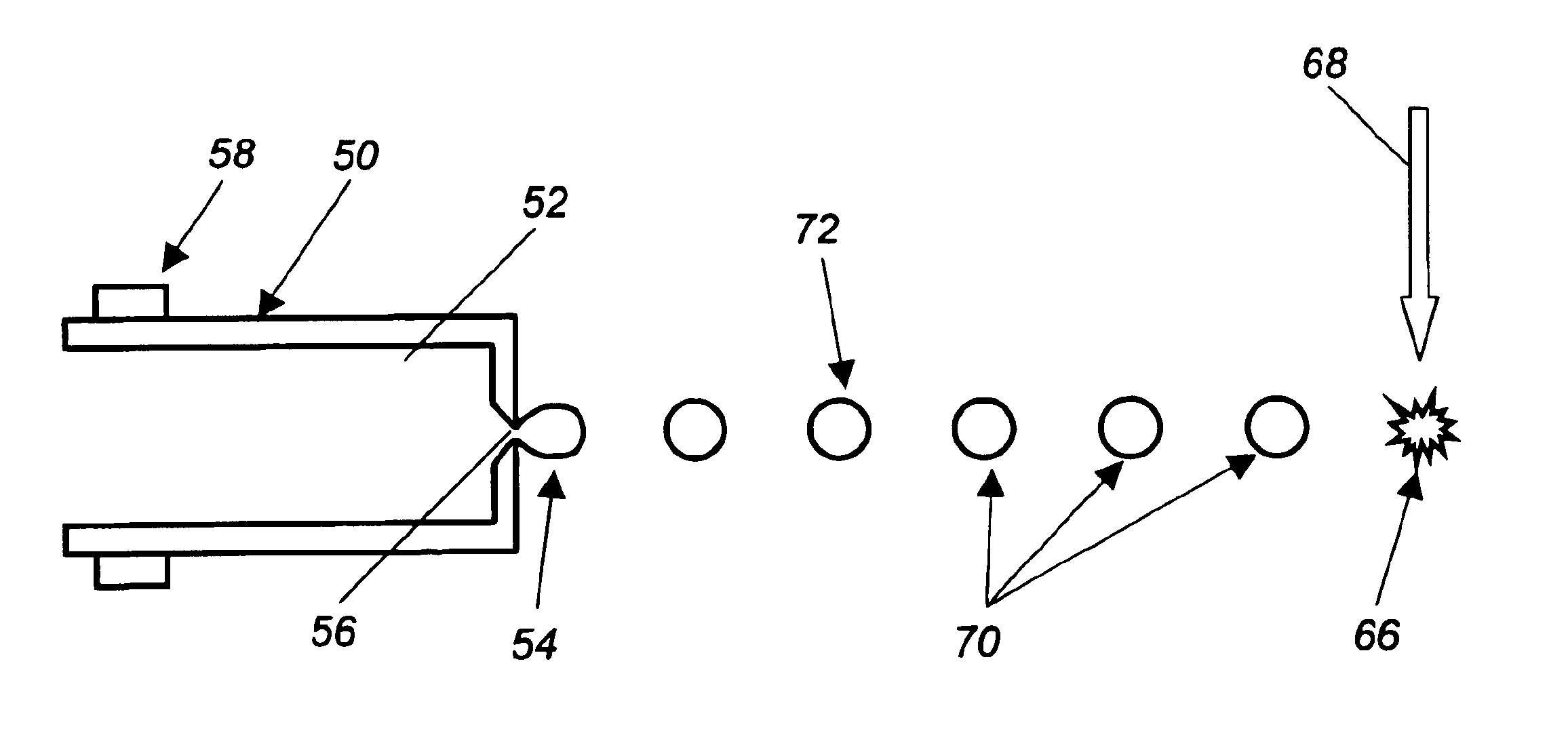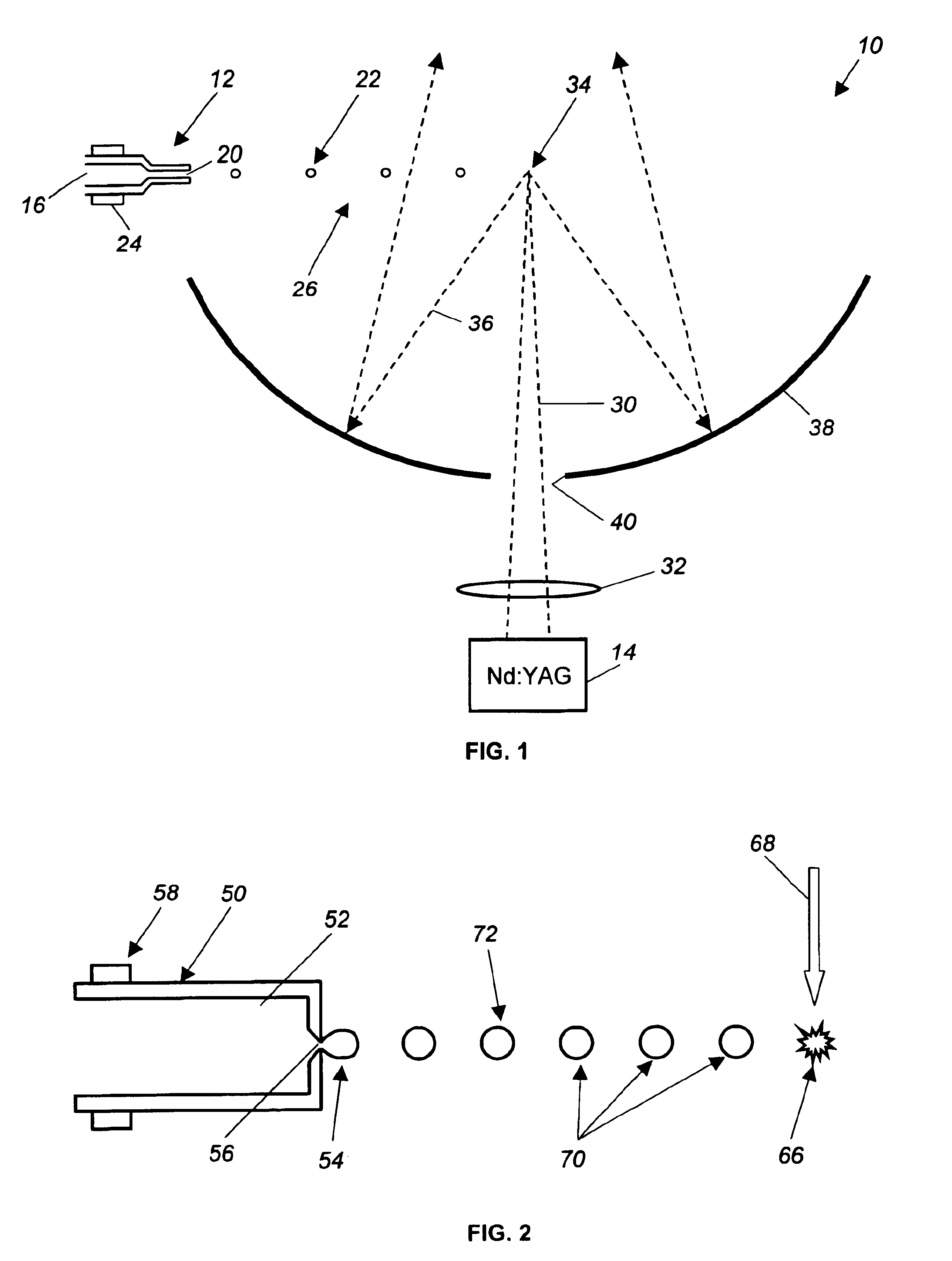Droplet target delivery method for high pulse-rate laser-plasma extreme ultraviolet light source
a laser-plasma, high-pulse technology, applied in the field of laser-plasma, extreme ultraviolet light source, can solve the problems of adversely affecting successive droplets in the stream, damage or destruction of successive droplets, damage to sensitive optical components,
- Summary
- Abstract
- Description
- Claims
- Application Information
AI Technical Summary
Benefits of technology
Problems solved by technology
Method used
Image
Examples
Embodiment Construction
The following discussion of the embodiments of the invention directed to a nozzle for an EUV radiation source is merely exemplary in nature, and is in no way intended to limit the invention or its applications or uses.
FIG. 1 is a plan view of an EUV radiation source 10 including a nozzle 12 and a laser beam source 14. A liquid 16, such as xenon, flows through the nozzle 12 from a suitable source (not shown). The liquid 16 is forced under pressure through an exit orifice 20 of the nozzle 12 where it is formed into a stream 26 of liquid droplets 22 directed to a target location 34. A piezoelectric transducer 24 positioned on the nozzle 12 perturbs the flow of liquid 16 to generate the droplets 22.
A laser beam 30 from the source 14 is focused by focusing optics 32 onto the droplet 22 at the target location 34, where the source 14 is pulsed relative to the rate of the droplets 22 as they reach the target location 34. The energy in the laser beam 30 ionizes the droplet 22 and generates a...
PUM
 Login to View More
Login to View More Abstract
Description
Claims
Application Information
 Login to View More
Login to View More - R&D
- Intellectual Property
- Life Sciences
- Materials
- Tech Scout
- Unparalleled Data Quality
- Higher Quality Content
- 60% Fewer Hallucinations
Browse by: Latest US Patents, China's latest patents, Technical Efficacy Thesaurus, Application Domain, Technology Topic, Popular Technical Reports.
© 2025 PatSnap. All rights reserved.Legal|Privacy policy|Modern Slavery Act Transparency Statement|Sitemap|About US| Contact US: help@patsnap.com


